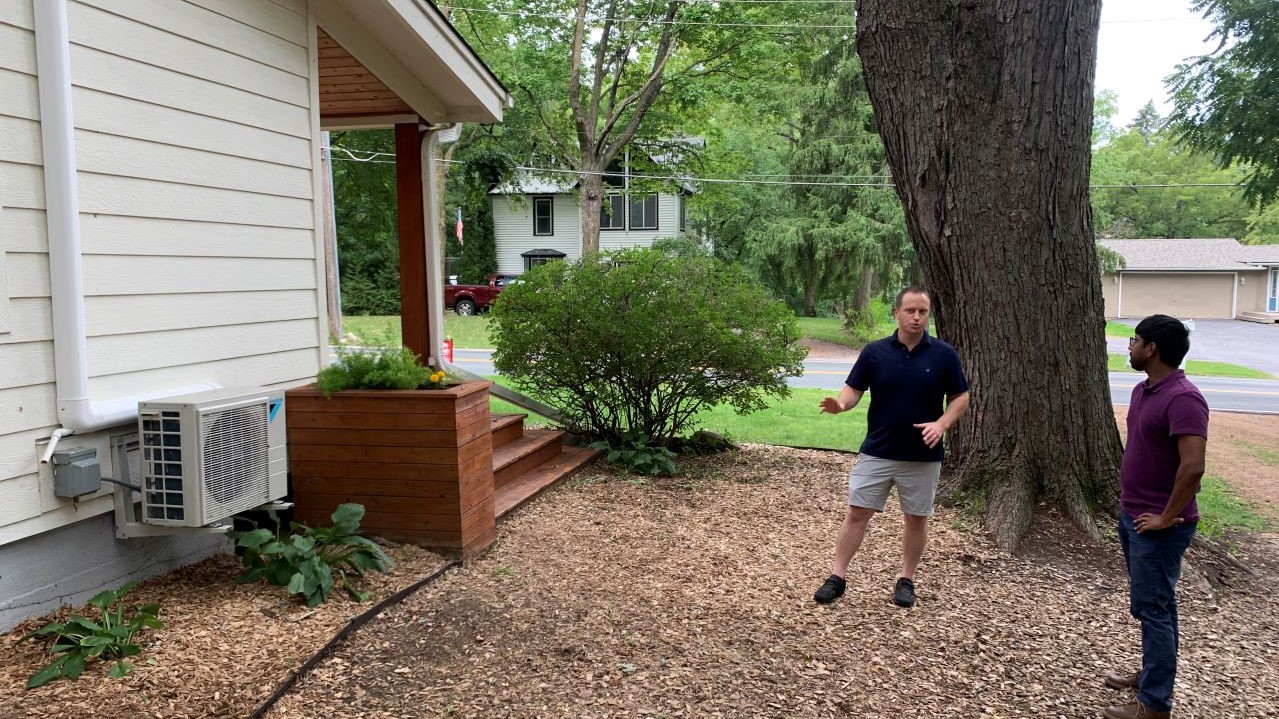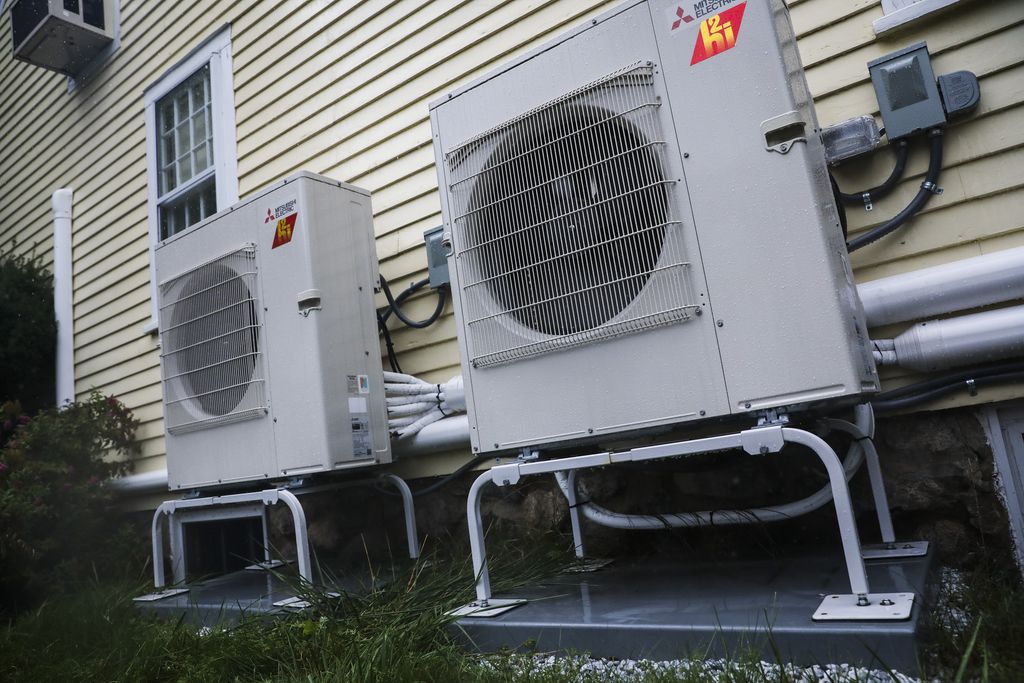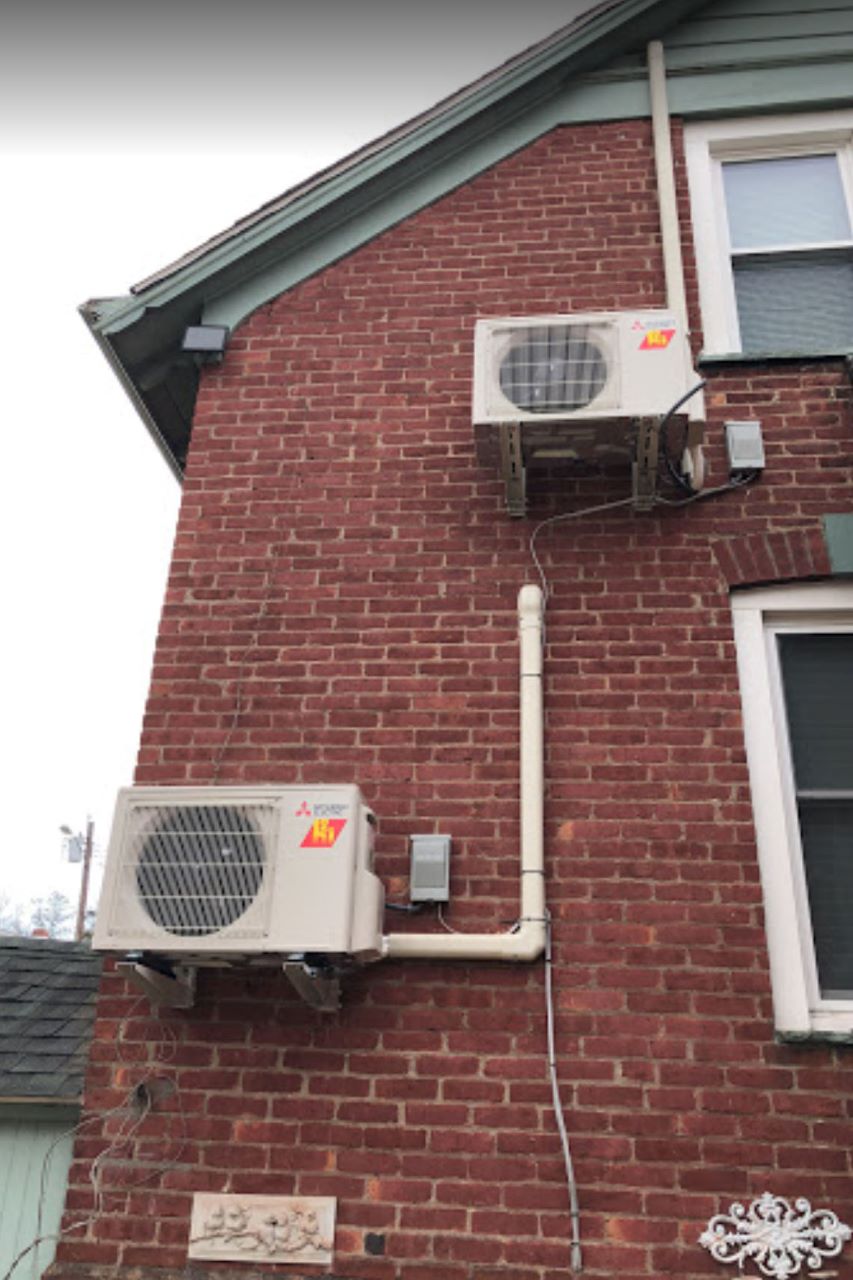
One of Fresh Energy’s priorities as we continue speeding the transition to a clean energy economy is accelerating the adoption of innovative technologies that get Minnesota closer to our greenhouse gas (GHG) emissions reduction goals. Heat pumps in particular are one technology that our team of technical and policy experts has identified as part of a multi-pronged solution to help Minnesotans reduce our emissions. As we continue in this process, we are keeping a close eye on heat pump deployment in other cold weather states so that we can approach these clean energy solutions as equitably and efficiently as possible. Let’s jump in!
Together, heating and cooling comprise a majority (51 percent) of household energy use and a sizable share of the average energy bill (40 percent) (Patano, Malinowski, Gard-Murray, Adams 2021). In the United States, residential heating and cooling systems have long been dominated by gas and electric resistance furnaces for heating and air conditioners for cooling. Heat pumps, however, provide an interesting alternative to these traditional systems.
Heat pumps are energy efficient, all-in-one heating, ventilation, and air conditioning (HVAC) systems that use electricity instead of fossil fuels. A heat pump is a system that transfers heat from the inside of a home, multifamily residential unit, or commercial building to the outside and vice versa. To learn more about heat pumps and their effectiveness, check out Fresh Energy’s blog on heat pumps.
While the deployment of heat pumps in Minnesota has been slow, I’ve assessed three northeast states as case studies for examples of what an expanded heat pumps rollout could look like for Minnesota. Three states, Maine, Massachusetts, and New York, were chosen for their more robust implementation of heat pump programs compared to Minnesota. These states were also chosen because they are operating in cold-weather climates that are similar to Minnesota’s long and harsh winter, making them suitable for comparison. Outlining heat pump programs and the policies that are employed in these states, I have put forward recommendations that would serve Minnesota in switching to heat pumps as the main HVAC unit used across our state. With these recommendations, this proposal aims to advocate for a clean and equitable energy transition that prioritizes heat pumps in residential areas using a policy framework.
Maine

According to the U.S. Energy Information Agency, Maine is the most heating-oil dependent state in the country (Maine.gov, 2021). Moreover, as the third coldest in the United States throughout the year (with Minnesota as the fourth coldest), transitioning to cleaner heating and cooling systems is among one of the highest priorities for Maine’s new Climate Action Plan. The independent implementer for the state’s efficiency programs, Efficiency Maine, has been rolling out heat pumps at a rapid rate compared to other states. Heat pumps have shown to be effective and efficient in heating this northeast state, helping residents of Maine save $812 a year on energy spending compared to using a fossil gas furnace and up to $2,930 when switching from propane (Long, 2021). In line with the state’s Climate Action Plan, Maine’s goal to add 100,000 new heat pumps by 2025 is also forecast to reduce heating bills from $300 to $600 a year per home. Efficiency Maine aims to expand its heat pump installations to small businesses, municipal and public school buildings, other buildings, and to the rest of the state.
According to Efficiency Maine, installation data have shown the most installation per capita in rural and northern Maine. In addition to programs for under-resourced households, Efficiency Maine has also provided funding opportunities to help smaller municipalities accelerate their transition to efficient heating and lighting systems, such as helping offset the cost of heat pump installations.
Additionally, Efficiency Maine has partnered with MaineHousing to provide a heat pump program for under-resourced households. MaineHousing is an independent agency created by the Maine State Legislature to address unaffordable housing and provide other services pertaining to housing for under-resourced communities. The heat pumps program helps pay for the cost of purchase and installation to qualifying residents.
Massachusetts

For more than a decade, Massachusetts’ energy efficiency programs have been considered one of the most robust and effective in the country. Integral to this has been the Mass Save program—a consortium of electric and gas utility companies that manage and deliver energy efficiency services to regions in Massachusetts, funded by small fees on consumers’ utility bills. The program works closely with the Massachusetts Department of Energy Resources to offer incentive rebates for homeowners that help them make the switch to more efficient heat systems that emit less carbon, such as qualifying heat pump models.
Mass Save follows a three-year efficiency plan model that sets emissions reduction goals for three-year terms, which dictate program plans for the next three years. The efficiency plan for 2022-2024 in particular stands out, as it made electrification a core tenet of efficiency measures for the state.
Evaluation of the program is ongoing. A 2020 study showed that residential communities with more people of color, non-English speakers, renters, and lower household incomes receive Mass Save’s services at significantly lower rates than communities that are more affluent and white. The results prompted the new three-year plan to include investments that expand the program’s work with community groups and municipalities to better serve under-resourced communities. This ongoing re-evaluation of the program and its accountability to the public also provides an important lesson for all of us involved in speeding the clean energy transition: It must be accessible and inclusive to everyone.
New York
In New York state, heat pump incentives are run by the New York State Energy Research and Development Authority (NYSERDA). NYSERDA’s heat pump incentives are divided into five programs across the state aiming to advance the state’s clean energy goals in line with the state’s commitment to carbon neutrality by 2040.

NYSERDA partners with certified contractors to carry out heat pump installation and services for customers. Approved heat pump contractors can assess which type of heat pump is appropriate for a house model, conduct a quality installation, and provide routine maintenance on the heat pump system as needed. If customers are eligible, they can apply for a rebate, incentive, or federal tax credit on their installation cost, helping expand accessibility of these energy efficiency tools to customers who might not otherwise be able to afford them.
A key policy piece in New York state’s transition has been the state’s Green New Deal that is investing over $450 million in heat pump incentives through utilities and over $200 million in market enabling—a process intended to help to drive education, marketing, and research pathways that increase market take-up of heat pumps.
A framework for a heat pump-powered transition in Minnesota
Heat pump initiatives should support cost reduction strategies through the different types of incentives, rebates, and financing plans available to customers. One of the biggest barriers to wider heat pump adoption is that the system itself has high upfront costs with low immediate returns on investment compared to fossil fuel alternatives. Implementing incentives to reduce the cost of purchase and installation should be a priority, similar to existing utility efficiency rebates. Massachusetts, Maine, and New York offer rebates only through qualified heat pumps and heat pump contractors to ensure quality and longevity of the system. Minnesota should work closely with contractors to provide a good range of options that are up to standard and customer satisfaction.
We need increased public awareness campaigns that engage customers and demonstrate the benefits of heat pumps, as people still are not fully aware of heat pumps and their benefits. Solutions included in these public education efforts should focus on building customer demands while presenting incentives to reduce costs. Marketing and promotional campaigns should prioritize clusters of businesses and residential areas. Promotions should also prioritize under-resourced communities and opportunities for rebates and incentives. Customers should further be made aware of the economic savings and environmental and health benefits that result from fuel-switching to heat pumps from fossil fuel alternatives.
Government agencies should develop long-lasting partnerships with contractors and utilities. The Department of Commerce oversees utility conservation programs for investor-owned utilities in Minnesota like Xcel Energy, which provides electricity for the majority of the Twin Cities region. Unlike the northeastern states I analyzed, investor-owned utilities design and implement their own programs, rather than a third party implementer (like Mass Save, Efficiency Maine, and NYSERDA). Xcel Energy and other utilities should be able to implement their own heat pump utility programs with close guidance from the Department of Commerce. This ensures funding for rebates and incentives along with regulations.
We should recognize increased heat pump deployment is a clear and achievable goal that would benefit from legislative support. With the passing of the Energy Conservation and Optimization (ECO) Act, Minnesota now has the momentum for fuel-switching incentives for households and commercial buildings to make the transition from fossil fuel heat sources to electric systems, such as heat pumps. Thanks to the passing of the ECO Act, utility companies can count allocations toward their Conservation Improvement Program (CIP) spending. However, continued ambition and strategic planning is necessary to make effective moves toward electrification at the pace and scale that climate change requires.
Moving forward
It is imperative that we keep equity at the forefront of this energy transition. Many under-resourced neighborhoods are comprised of Black, Indigenous, and other communities of color that have been deprived of political power and economic wealth due to racist structures in housing and policy that do not invest in these communities. While recognizing that technology is not the only solution to long-standing systems of oppression nor the full solution to combating climate change, a strategic clean energy framework that prioritizes equity and justice is necessary for a successful heat pump transition.
Building from lessons provided by Maine, Massachusetts, and New York, I’ve discussed barriers inhibiting heat pump deployment such as cost, lack of awareness, eligibility, inequitable access, and more. Going forward I recommend key legislative supports and planning to overcome these barriers to ultimately move the state toward energy efficiency and cleaner energy. Heat pump programs should be centralized with strong collaboration between utilities and government entities to make it easier for consumers to decide whether heat pumps are right for them.
These recommendations are based on lessons learned from northeastern U.S. states that were beneficial for comparisons with Minnesota, in particular based on community outreach, rebates, workforce development, and legislative support. Regardless, the clean energy transition from fossil fuels to electrification in heating and cooling systems will require policy support at the state level. Policies that are strongly committed to moving all Minnesota homes toward a cleaner energy source are necessary and must include robust, equitable plans that benefit all who call the state home.

